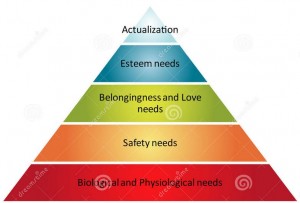I am rereading Daniel Pink’s Drive for a book club at one of my schools. The first time it was a complete revelation to me. It helped me step aside in my classroom and help my students take the reins of their own learning. This time it is allowing me to subtly rethink the things I’m doing.
We all know that students who exhibit intrinsically motivated behavior (pink calls this type i) have an easier time mastering things than students who exhibit extrinsically motivated behavior (type x). Type I behavior leads to mastery where type x behavior leads to compliance. What is difficult is helping students who normally exhibit type x behavior into type I learners. I think that this transition happens when you give students as much autonomy as possible. There will be setbacks for all students and, well honestly I think that’s a good thing if we deal with it in the right way. We need to teach standards but we also need to grow healthy adults.
Pink says that there are four major things we can have autonomy over; time, technique, team, and task. Some of these are very easy to give to our students, others are not. Here is a look at them individually.
Time:
Schools are obviously not work environments where students can come and go as they please. We can’t be here until 9 at night for kids who would rather come in at 1 in the afternoon. I get that.
Much of the life in my room is spent in projects. Those projects have defined start and end days, but much of the space in between lives in a world of flex. For example, right now my fourth graders are writing a piece of music that uses B, A, G, and E on the recorder, creating a background track in GarageBand to play along with, answering some questions about the process, and then we’re presenting. The way we talked about timeline was “You have two weeks and then we’re going to perform. If I were you I’d spend a week on my recorder part, half a week on the GarageBand track, and half a week practicing the two together.” Some took my advice; some flipped it and started with the GarageBand track; some spent nearly all of their time in GarageBand and had to cram in the recorder at the last 25 minutes or so. After our performance week next week we will look at how we did (performances will be recorded) and reflect on the process. Every group has a piece that is pretty awesome to share but this isn’t the first time they had autonomy over their time. It takes a few times of honest reflection for them to make meaningful change in the way they spend their time. It’s difficult but necessary.
Technique:
I think that schools are pretty good at this piece of the puzzle. We are good at giving kids lots of different techniques and then letting them figure out what works best for them. In my room I can be a little more flexible than most others. Technique in my room usually evolves through the process of music making. I may demonstrate how to play something but who’s watching exactly how I’m holding my hands? (Even when I draw attention to the way I’m holding something.) When a student has a problem we talk about a different way to hold a drumstick, or a different way of holding your hands on the piano. They need to see why it is necessary before the how matters enough to pay attention to.
Task:
This is where it gets really hard. We’re starting to do a better job with this through the workshop model. Students genuinely do have a huge influence over their task in those models. There is no autonomy over task when worksheets are involved…
In my room at the end of a set of experiences that build understanding of a topic I used to create a project that allowed students to show their understanding of what we learned. When I first get a set of students or sporadically when they’re ready for something new, I do design the project in a way they haven’t seen before. Usually though I say, “Alright what have we learned over the last few weeks? Your job is to create a piece of music to show your understanding of (all the things they just said).” I go around and discuss with all the students what they’ve come up with and push them as needed, but usually they’re spot on. They know how to demonstrate what they’ve learned.
Team:
This one is easy for us but hard for the kids. Talk about growing pains. When kids first start choosing groups in my room, it’s not pretty. There is a whole lot of “My group isn’t sharing well”, or “no one is listening to me”. My answer is (almost) always “You’re really going to have to think about the group you choose next week.” I monitor closely for kids who are being left out and fix it before it becomes a problem. Gradually students stop choosing groups based on their cliques and begin choosing “music groups”. It takes a while and some students struggle longer than others. I think it’s an important lesson to learn. Worth the time that the missteps at the beginning take because the end process is fantastic.
In other words we have a ton of things that we control because it’s easier for us when we control it. It’s messy when kids manage their lives at first. Start small and grow. It doesn’t stay messy for long. It leads to type I behavior and to mastery instead of creating more type x behavior that the 21st century does not need.

